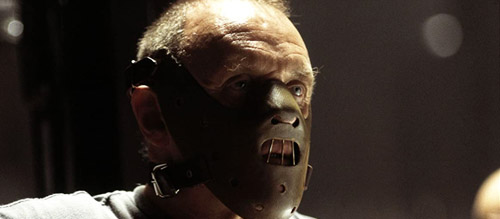‘Hannibal’ at 20 – Review
Hannibal (2001)
Director: Ridley Scott
Screenwriters: David Mamet, Steven Zaillian
Starring: Anthony Hopkins, Julianne Moore, Gary Oldman, Ray Liotta, Frankie Faison, Giancarlo Giannini, Francesca Neri, Zeljko Ivanek, Hazelle Goodman
Hannibal is a frustrating film. Granted, it was a tall order to follow up The Silence of the Lambs ten years after it swept the Academy Awards, especially with Thomas Harris’ divisive and flawed book sequel as the basis for the screenplay. But there are talented people in front of and behind the camera, and some ambitious and creative choices made, so perhaps you can chalk this one up to having to keep too many plates spinning at once.
Ten years after FBI Agent Clarice Starling (Julianne Moore) hunted down serial killer Buffalo Bill with the help of incarcerated cannibal Dr Hannibal Lecter (Anthony Hopkins), Starling’s position at the Bureau is threatened when she is blamed by her superiors for a very public drug raid going spectacularly wrong. Meanwhile, having escaped the asylum, Lecter is finally drawn out of hiding in Florence, Italy when a wealthy victim of his, Mason Verger (Gary Oldman), pulls strings to get Starling to resume the FBI manhunt and allow Verger an opportunity to exact his revenge.
One of the most effective choices in The Silence of the Lambs was what they decided not to show. The scene in that film where Dr Chilton shows an (unseen to the audience) Polaroid to Starling with the comment, “He did this to her… the doctors managed to reset her jaw, more-or-less” has in-built power and is far more chilling than actually seeing the incident in question. In Hannibal, Ridley Scott decided to show us the same violent assault of the nurse by Lecter in flashback, and in lurid detail, and just like that, the spell is broken. Show and don’t tell is a common adage in filmmaking, but you don’t need to show everything.
Hannibal is a gruesome affair throughout and absolutely everything is put on screen for the sake of eliciting a gasp from the audience. Throats are slit, faces are peeled and eaten, bowels fall out of hanging bodies and brains are flambéd. Far from the atmospheric psychological thriller that its predecessor was, Hannibal is a splatter movie with better than normal production values and big-name actors.
You can’t really morally object to the sequel to The Silence of the Lambs being far more explicit – this is a story revolving around the life and times of a charismatic cannibalistic serial killer after all – but when nothing is left to the imagination, you immediately lose tension and you soon become desensitised to anything that was intended to be shocking or frightening.
Hannibal could have been relentlessly bleak, almost nihilistic in its hopelessness, but there is another juxtaposing tone, and it’s this liberal deployment of dark humour that almost rescues the film.
More often than not, Hannibal’s darkly humourous edge comes from Oldman as depraved millionaire child molester Mason Verger, a man left a horribly disfigured quadriplegic by an earlier encounter with Lecter, musing to Starling that the good doctor drugging him and suggesting he cut off his own face “seemed like a good idea at the time”. Oldman’s scenes are probably the highlight of the film – he conveys an impressive amount of malicious, spoilt rich kid entitlement through heavy prosthetics as Verger is left increasingly apoplectic by his lackeys’ inabilities to apprehend Lecter.
Though she commits fully to the role and holds her own while being belittled and scapegoated by her FBI and DOJ higher-ups (chiefly Ray Liotta as the slimy and misogynistic Paul Krendler), Moore can’t hold a candle to Jodie Foster’s nuanced portrayal of Clarice Starling. Hopkins as Lecter on the other hand is still entertaining, particularly in how he gleefully toys with Detective Pazzi (Giancarlo Giannini) early in the film and Clarice in the finale, but he too proves divisive as he completes his transformation into a cartoon character, an almost supernaturally strong slasher villain who now has an innocuous and annoying catchphrase: “Okey-dokey”.
The film’s $87 million budget is definitely in evidence – Norris Spencer’s production design is lavish, the locations numerous and photographed pristinely by DP John Mathieson, and Hans Zimmer’s score is appropriately bombastic for this material. For a key scene with Lecter and a suspicious Detective Pazzi both at an outdoor opera performance, Zimmer worked with Patrick Cassidy to produce an original aria specifically for this scene, “Vide Cor Meum”, which offers a few minutes of tranquil respite in a hugely macabre movie.
The Silence of the Lambs worked in a large part due to an artistic Holy Trinity – Demme, Foster and Hopkins – but, lacking two of the three magic ingredients, Hannibal rarely manages to rise above the level of watchable. One of the biggest R-Rated films of all time is all squeamish spectacle and surface-level thrills, and it would take another decade-and-change to see a compelling version of this particular story adapted in the second and third seasons of Bryan Fuller’s riveting series ‘Hannibal’.
11/24


